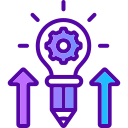Platforms and Tools Powering Digital Money Education
Universities and nonprofits offer structured paths with quizzes, forums, and case studies. Learners can sample modules freely, then commit to a certificate for accountability. The best pair real datasets with practical, step-by-step assignments.
Platforms and Tools Powering Digital Money Education
Budgeting apps now include tutorials beside transactions, explaining categories, cash flow gaps, and spending trends. When users overspend, an embedded lesson suggests rules like fifty-thirty-twenty, supported by templates and instant, personalized tips.




